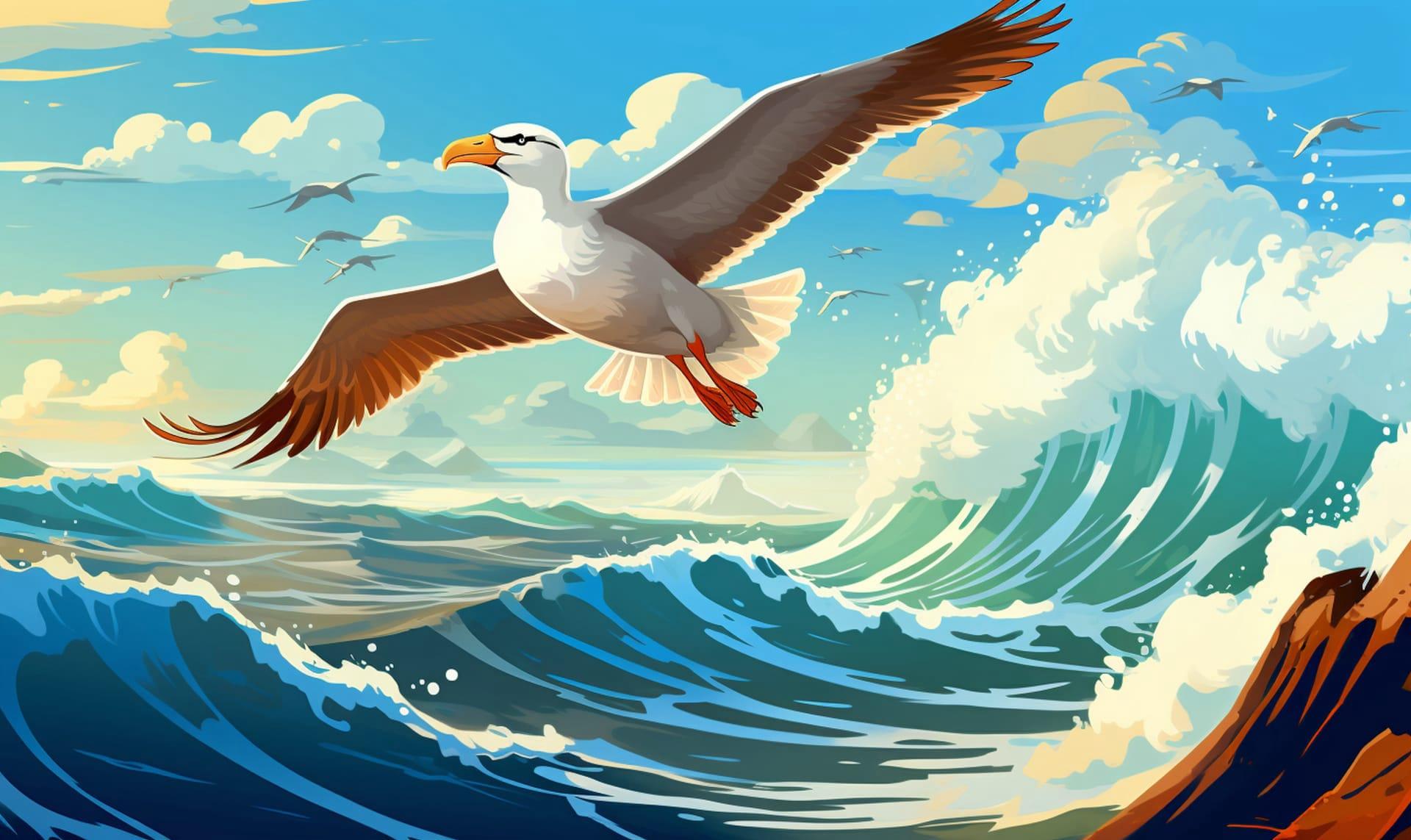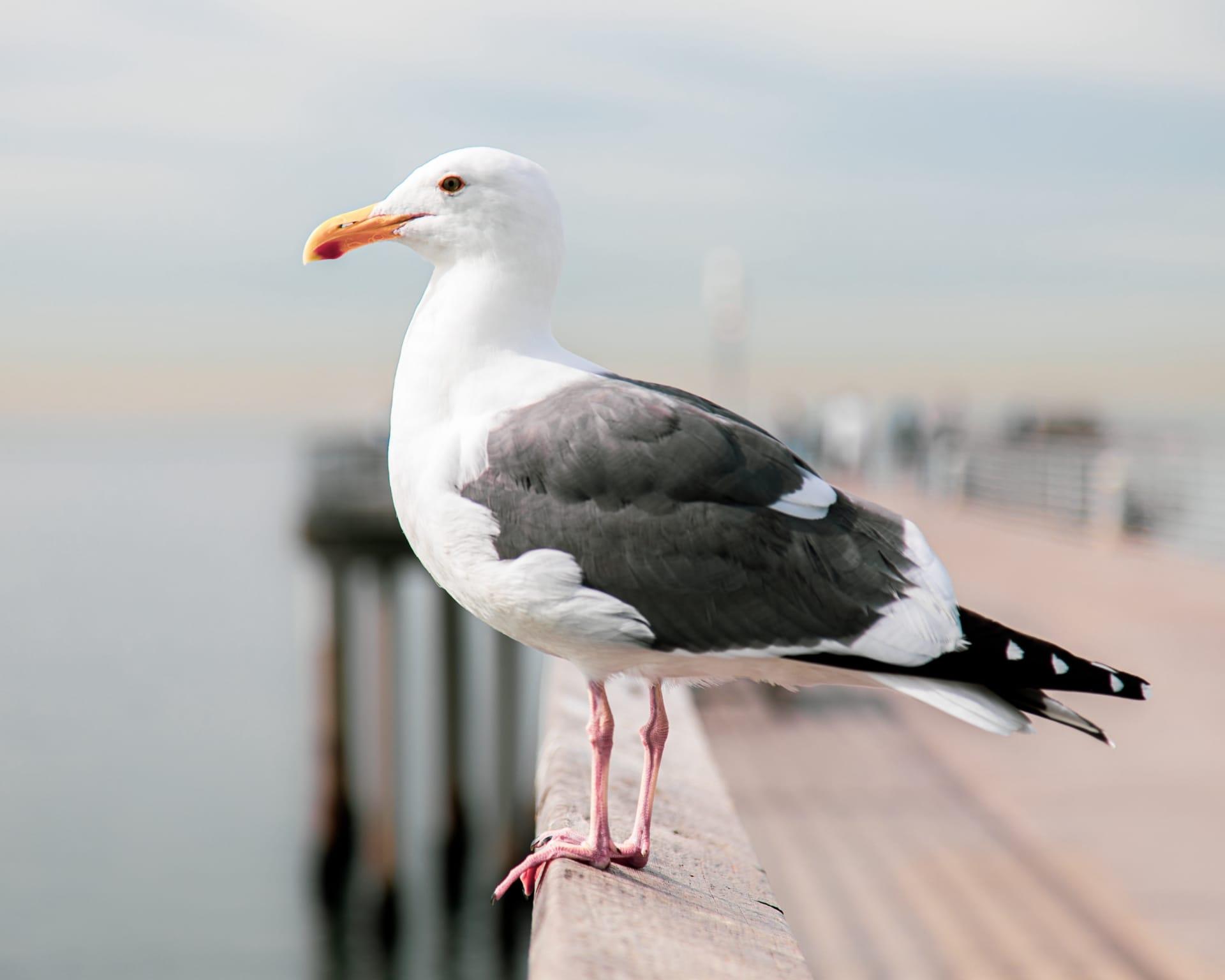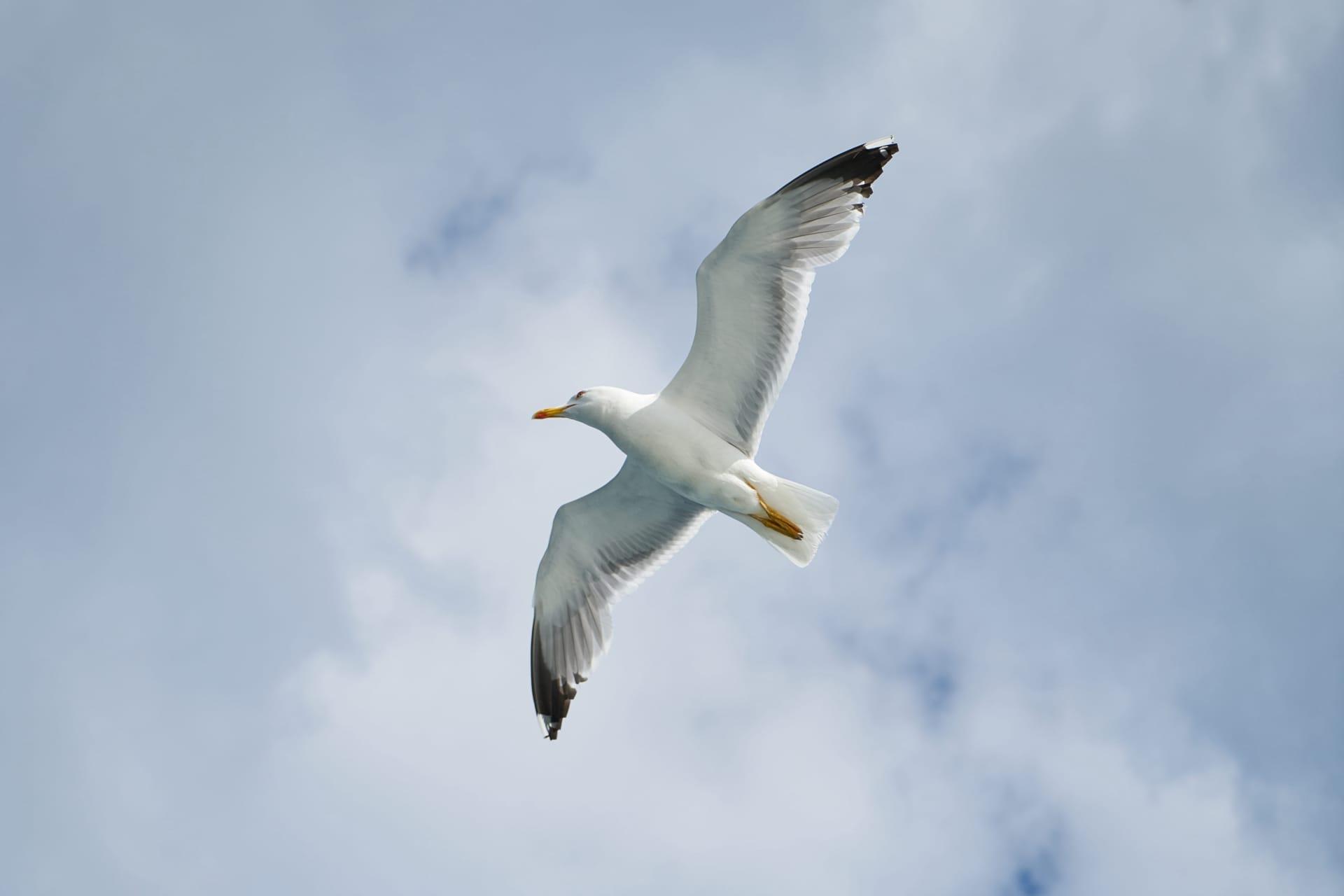Albatross
- Home /
- Mini Encyclopedia /
- Animal /
- Albatross
1
The albatross, a captivating seabird, belongs to the family Diomedeidae and is renowned for its colossal wingspan, the largest of any bird. There are 22 recognized species of albatross, categorized under four genera: Phoebastria, Thalassarche, Diomedea, and Phoebetria. Each species exhibits unique features; for instance, the Wandering Albatross (Diomedea exulans) holds the record for the longest wingspan, reaching up to 11 feet (3.4 meters). The diverse species range in size, color, and beak shape, allowing them to adapt to different environments.
Albatrosses are predominantly found in the Southern Hemisphere, with a majority of species residing in the Antarctic and sub-Antarctic regions. However, three species are native to the North Pacific: the Laysan, Black-footed, and Short-tailed Albatrosses. These majestic birds are pelagic, meaning they spend most of their lives at sea, coming to land primarily for breeding. They favor remote, isolated islands for nesting, such as the Midway Atoll and the Falkland Islands, where human disturbance is minimal. Their distribution is largely influenced by oceanic winds, which they skillfully harness for energy-efficient gliding.

2
Question: Do albatrosses mate for life?
Answer: Yes, albatrosses are known for their remarkable fidelity, often forming lifelong partnerships. Once they find a mate, usually around the age of five, they engage in elaborate courtship rituals, including synchronized dancing and vocalizations. These bonds are incredibly strong, with pairs reuniting each breeding season. However, if a pair's breeding attempts repeatedly fail, they might 'divorce' and seek new partners. This monogamous nature contributes to their slow reproduction rate, as they typically produce only one egg per breeding cycle and breed every one to two years.

3
Albatrosses have evolved several survival strategies to thrive in the harsh marine environment. One of their most notable adaptations is their ability to fly long distances with minimal energy. Their long, narrow wings are perfectly designed for dynamic soaring, a technique that exploits wind gradients above ocean waves to travel vast distances without flapping. This adaptation is crucial for their nomadic lifestyle, as they often travel thousands of miles in search of food.
Their diet primarily consists of squid, fish, and krill, which they obtain by surface seizing or plunge diving. Albatrosses have a highly developed sense of smell, unusual for birds, which helps them locate food across vast oceanic expanses. They are also known to follow fishing boats to scavenge offal, a behavior that unfortunately leads to accidental catches in fishing gear, posing a significant threat to their survival.

4
In the ecosystem, albatrosses play a vital role as apex predators and scavengers. Their feeding habits help regulate populations of squid and fish, maintaining a balance in the marine food chain. By consuming carrion and waste, they also aid in the ocean's natural cleaning process, preventing the spread of disease and promoting a healthier marine environment.
Moreover, albatrosses contribute to the nutrient cycle, especially on their breeding islands. Their guano (bird droppings) enriches the soil with nitrogen, fostering plant growth and supporting other bird species that share their nesting grounds. These islands become biodiversity hotspots, sustaining a wide range of flora and fauna, thanks in part to the albatross's presence.

5
Film: "Albatross: The Film" is an American documentary released in 2017 by filmmaker Chris Jordan. This visually stunning film focuses on the tragic impact of plastic pollution on albatrosses inhabiting Midway Island in the North Pacific. It showcases the life cycle of these birds, juxtaposed with the disturbing reality of environmental degradation and its effect on wildlife.
Book: "The Albatross: Their World, Their Ways" is a comprehensive guide published in the UK in 2008. Authored by Tui De Roy, Mark Jones, and Julian Fitter, it delves into the fascinating world of albatrosses, exploring their biology, behavior, and the challenges they face. The book combines scientific research with stunning photography, making it accessible to both experts and general readers.
Book: "Eye of the Albatross: Visions of Hope and Survival" is a work by renowned American author and conservationist Carl Safina, published in 2002. This book provides an in-depth look into the life of an albatross named Amelia, tracing her journey across the Pacific. Safina blends natural history with broader environmental issues, highlighting the interconnectedness of life and the importance of ocean conservation.